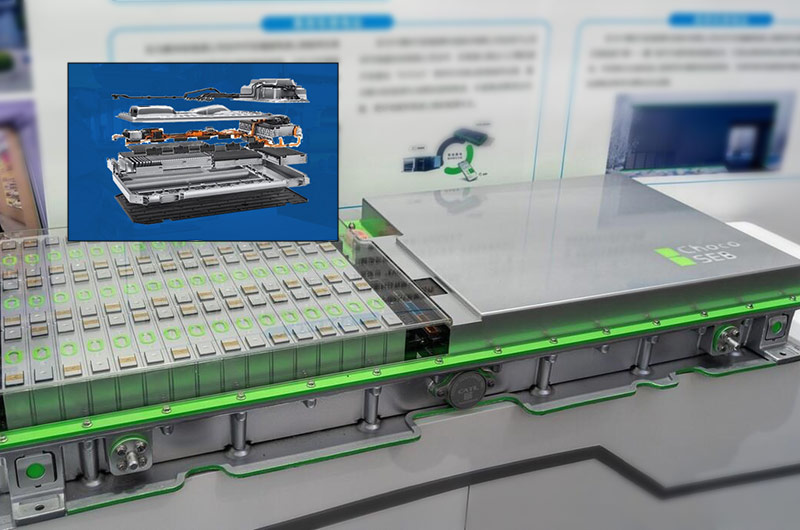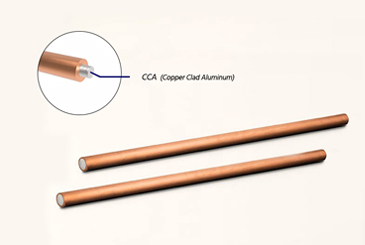With the rise of new energy vehicles, aluminum alloy power battery casings play an important role. The traditional steel battery case is too heavy, which limits the improvement of battery life. In contrast, the aluminum alloy battery case is light in weight, only 19kg, and has good weldability and sprayability, making it the preferred material.
Why choose Chalco?
Chalco Aluminum has passed the requirements of the automotive IATF16949 standard audited by BSI (British Standards Institution), providing quality compliance for continuously expanding the automotive product market and achieving high-quality development.
Chalco has a complete set of advanced new energy vehicle research and development, testing and analysis instruments, which guarantee the efficiency of new product research and development and accelerate the transformation of scientific and technological achievements. In addition, our R&D & innovation and verification capabilities can help enhance customers' competitiveness by saving time and cost in new product development and marketing.
Chalco Aluminum serves Tesla, Ford, Shanghai Automobile, Weilai Automobile, Beiqi New Energy, Changan Automobile and other famous new energy automobile manufacturers. Some models of automotive plate material certification.

Specification of aluminum plate for power battery shells
| Alloy | Temper | Size specification/mm | Application | |||
| Thickness | Type | Width | length | |||
| 1050 | O H12 H14 | 0.60-1.60 | plate | 100.0-2000.0 | 1000-3 000 | power battery shells |
| strip | - | |||||
| 3003 | O H12 H14 | 0.60-3.00 | plate | 100.0-2000.0 | 1000-3 000 | |
| strip | - | |||||
| 3005 | O | 0.60-2.00 | plate | 100.0-2000.0 | 1000-3 000 | |
| strip | - | |||||
Chemical composition of aluminum plate for power battery shells
| Alloy | 1050 | 3003 | 3005 |
| Si | 0.25 | 0.60 | 0.60 |
| Fe | 0.40 | 0.70 | 0.70 |
| Cu | 0.05 | 0.05-0.20 | 0.30 |
| Mn | 0.05 | 1.0-1.5 | 1.0-1.5 |
| Mg | 0.05 | - | 0.2-0.6 |
| Cr | - | - | 0.10 |
| Ni | - | - | - |
| Zn | 0.05 | 0.10 | 0.25 |
| Ti | 0.03 | - | 0.10 |
| Al | Remainder | ||
Deviation requirements for aluminum plates used for power battery shells
| Thickness/mm | Allowable deviation/mm |
| 0.60-2.00 | ±0.02 |
| >2.00-3.00 | ±0.03 |
| >3.00-4.00 | ±0.04 |
| Width/mm | Allowable deviation/mm |
| 500.0 | ±0.5 |
| >500.0-2000.0 | ±1.5 |
Longitudinal tensile mechanical properties of aluminum plates for power battery shells at room temperature
| Alloy | Temper | Thickness/mm | Tensile strength /MPa | Specified non-proportional tensile strength /MPa | Elongation after break /% |
| 1050 | O | 0.60-1.50 | 60-90 | ≥20 | ≥30 |
| >1.50-1.60 | ≥35 | ||||
| H12 | 0.60-1.50 | 80-110 | ≥65 | ≥6 | |
| >1.50-1.60 | ≥8 | ||||
| H14 | 0.60-1.50 | 95-120 | 75 | ≥4 | |
| >1.50-1.60 | ≥5 | ||||
| 3003 | 0.60-1.50 | 100-130 | ≥40 | ≥25 | |
| >1.50-3.00 | ≥30 | ||||
| H12 | 0.60-1.50 | 125-155 | ≥90 | ≥5 | |
| >1.50-3.00 | ≥7 | ||||
| H14 | 0.60-1.50 | 140-175 | ≥125 | ≥4 | |
| >1.50-3.00 | 6 | ||||
| H118 | 1.00-1.50 | ≥185 | ≥165 | ≥2 | |
| >1.50-4.00 | ≥3 | ||||
| 3005 | O | 0.60-1.50 | 115-165 | ≥45 | ≥18 |
| >1.50-2.00 | ≥20 |
Laser welding performance of aluminum plate for power battery shell
| Alloy | Temper | Crackle | Abnormal weld pool occurrence ratea | Stomata | Spatter |
| 1050 1060 3003 | O H12 H14 H18 | - | ≤3% | - | Allow slight |
| 3005 | O | - | ≤5% | - | Allow a small amount |
3003 3005 aluminum coil characteristics for power battery shell
Lightweight: compared with other metal materials, aluminum alloy is relatively light and has a good strength-to-weight ratio, which can reduce the weight of the entire battery system and improve the energy efficiency and cruising range of electric vehicles.
High strength: aluminum alloy has high strength, which can provide good structural support and impact resistance, and protect the battery module from external shock and vibration.
Good thermal conductivity: aluminum alloy has excellent thermal conductivity, which can effectively conduct the heat generated inside the battery, improve the heat dissipation efficiency of the battery, and keep the temperature of the battery stable.
Good corrosion resistance: aluminum alloy has good corrosion resistance, and can maintain a stable surface state under harsh environmental conditions, prolonging the service life of the battery case.
Strong plasticity: aluminum alloy has good plasticity and processability, and is easy to form and process into complex shapes, meeting the needs of battery case manufacturing with different design requirements.
Recyclability: aluminum alloys are recyclable materials that contribute to the sustainability and environmental friendliness of batteries.

3003 3005 aluminum coil surface treatment for power battery shell
The four major processes for surface treatment of new energy battery aluminum shells include powder electrostatic spraying, electrophoretic painting, plasma-enhanced electrochemical surface ceramization and frosting.
Powder electrostatic spraying: use an electrostatic powder spray gun to spray negatively charged powder onto the aluminum case of the power battery, and then heat, melt and solidify to form a film. This process can provide good corrosion resistance and acid, alkali and salt spray resistance.
Electrophoretic painting: a coating method in which pigments and resin particles suspended in electrophoretic fluid are oriented to migrate and deposited on the surface of the aluminum shell of the power battery by using an external electric field. After electrophoretic painting, the surface of the aluminum shell has a soft luster, which can resist the erosion of cement, mortar and acid rain.
Plasma-enhanced electrochemical surface ceramization: the plasma-enhanced electrochemical surface ceramization process is used to improve performance by forming a ceramic film on the surface of the aluminum shell. This process can produce a variety of shades, and the decorative effect is good, but the cost is relatively high.
Sanding process: use chemical sanding agent to chemically treat the surface of the aluminum shell to obtain a beautiful sanding effect on the surface. This method produces the same sand finish as mechanical sandblasting and is suitable for thin or small pieces of aluminum casings.

Application of electric vehicle power battery shell
Inner lining plate of power battery case: 1050 Aluminum coil plates for power battery shells can be used to make lining plates inside the power battery shell, providing support and protection functions, and possessing conductivity, which helps in the transmission and distribution of current.
Power battery shell: 3003 Aluminum coil plates for power battery shells are often used to manufacture power battery shells, which have good strength and corrosion resistance, can provide structural support and protection, and can maintain stable performance in harsh environments.
Power battery housing: 3005 Aluminum coil plates for power battery shells are often used in the manufacturing of power battery shells, which have good corrosion resistance and antioxidant performance. They can effectively prevent corrosion and damage to the battery shell from the external environment, and protect the safety and stability of the internal structure and components of the battery.















